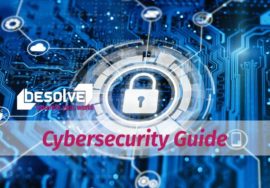
All about Ransomware attacks, How to get rid of
All about ransomware attacks
In November 2022, ransomware is a major news topic, because of a Ransomware attack on the AIIMS Delhi server. You may have heard tales of assaults on significant businesses, organisations, or governmental bodies, or you may have personally been the victim of a ransomware attack on your own device. Having all of your files and data kept hostage until you pay is a serious issue and a terrifying thought. Read on to discover about the various types of ransomware, how to obtain it, where it comes from, who it targets, and what you can do to defend against it if you want to learn more about this menace.
Describe ransomware.
Definition of ransomware
A type of malware called ransom malware, sometimes known as ransomware, blocks users from accessing their personal or system files and demands a ransom payment in exchange for access. Although some individuals might believe “a virus locked my computer,” ransomware is more commonly referred to as a type of malware than a virus. The first ransomware versions were created in the late 1980s, and they demanded payment through postal mail.
Today, ransomware authors demand payment by bitcoin or credit card, and attackers target different types of people, companies, and organisations. Ransomware-as-a-Service, or RaaS, is a practice where certain ransomware producers provide their services to other online criminals.
Attacks using ransomware
A ransomware assault is carried out in what specific ways by threat actors? They must first obtain access to a computer or network. They can use the virus required to encrypt or lock up your device and data if they have access, which they do. Your computer can become infected with ransomware in a number of different ways.
Where can I find ransomware?
Malspam: Some threat actors employ spam to acquire access by sending emails with malicious attachments to as many recipients as they can, then watching to see who opens the attachment and “takes the bait,” as it were. Unsolicited email used to spread malware is referred to as malicious spam or malspam. The email could have malicious attachments like Word or PDF files. Additionally, it might link to websites that are harmful.
Malvertising: Malvertising is a common technique of infection. The use of online advertising to spread malware with little to no user engagement is known as malvertising or malicious advertising. Users can be taken to malicious servers when browsing the internet, even on sites that are legitimate, without ever clicking on an advertisement. These servers compile information about target machines and their locations before choosing the virus that will do the job the best.
This malware is frequently ransomware. Malvertising frequently carries out its operations through an infected iframe or unseen webpage element. The iframe redirects to an exploit landing page, and from there, malicious malware uses an exploit kit to attack the system. The fact that all of this occurs without the user’s knowledge gives rise to the term “drive-by download.”
Spear phishing: A ransomware assault can be more precisely targeted using spear phishing. An illustration of spear phishing would be sending emails to workers at a certain organisation with the false claim that the CEO is requesting that you complete a crucial employee survey or that the HR department wants you to download and review a new policy. Such strategies aimed at top-level decision-makers in a business, such as the CEO or other executives, are referred to as “whaling.”
Social engineering: Malspam, malvertising, and spear phishing all have components of social engineering and frequently do. Threat actors may utilise social engineering to appear legitimate, such as by pretending to be from a reputable organisation or a friend, in order to fool users into opening attachments or clicking on links. Other ransomware assaults by cybercriminals employ social engineering techniques, such as impersonating the FBI to intimidate victims into paying a ransom to access their files.
Another instance of social engineering would be if a threat actor obtained details about your interests, frequent destinations, employment, etc., from your public social media profiles and used some of that information to send you a message that appeared to be from a familiar source in the hopes that you would click before you realised it wasn’t real.
File encryption and ransom demand
You will notice a notification requesting a ransom payment to restore what the threat actor took when they obtain access and the ransomware software encrypts your files or data so you can’t access them (usually activated by the victim following a link or opening an attachment). Frequently, the attacker will demand cryptocurrencies as payment.
Varieties of ransomware
Scareware, screen locks, and encrypting ransomware are the three basic categories of ransomware:
Scareware: It turns out that scareware isn’t all that frightening. It consists of fake security programs and tech support fraud. A pop-up window could appear telling you that malware has been found and that the only way to get rid of it is to pay money. If you do nothing, pop-ups will probably keep coming, but your data are virtually protected. A trustworthy cybersecurity software package would not engage in this kind of client outreach. If this company’s software isn’t already installed on your machine, they wouldn’t be keeping an eye out for ransomware infestation. If you have security software, you have already paid for the software to do this function, therefore you won’t need to pay to have the virus eradicated.
Screen lockers: Upgrade your screen locks to orange terror alert for these individuals. When lock-screen ransomware infects your computer, you are completely locked out of it. A full-size popup with an official-looking FBI or US Department of Justice seal may frequently show when your computer first turns on, informing you that unlawful conduct has been discovered on your computer and that you must pay a fine. Though they wouldn’t lock you out of your computer or demand payment for criminal behavior, the FBI wouldn’t let you use it. They would follow the proper legal procedures if they had suspicions that you were involved in piracy, child pornography, or other cybercrimes.
Ransomware encryption: This is the really bad stuff. These are the individuals that steal your files, encrypt them, and then demand payment to decrypt and redeliver them. This kind of ransomware is particularly hazardous since, once attackers have access to your files, neither security software nor system restore can help you get your data back. Most of them are lost unless you pay the ransom. Even if you do make the payment, there is no guarantee the crooks would return your files.
Mac Ransomware
Discover KeRanger, the original genuine Mac ransomware.
The first ransomware for Mac OSes was released in 2016 by Mac virus developers, who were not the ones to be left out of the ransomware game. The ransomware, known as KeRanger, attacked the Transmission program, which, when used, copied harmful files that ran silently in the background for three days before detonating and encrypting information. Fortunately, soon after the ransomware was identified, Apple’s built-in anti-malware tool XProtect released an update that would prevent it from infecting user systems. However, Mac ransomware is now a real threat.
Findzip and MacRansom, both found in 2017, came after KeRanger. In 2020, there was something that appeared to be ransomware (ThiefQuest, aka EvilQuest), but it turned out to be what is referred to as a “wiper.” Although it encrypted files, there was never a mechanism for users to unlock them or get in touch with the gang about payments. It purported to be ransomware as a cover for the reality that it was stealing all of your data.
Mobile Ransomware
Ransomware wasn’t often used on mobile devices until the heyday of the infamous CryptoLocker and other families in 2014. Messages stating that the device has been locked because of some sort of illegal activity are frequently displayed by mobile ransomware. The phone will be unlocked following payment of a charge, according to the notification. Mobile ransomware is frequently spread through malicious apps, and in order to regain access to your device, you must restart your phone in safe mode and uninstall the offending program.
Who do developers of ransomware aim to harm?
Initial victims of ransomware when it first appeared (and later reappeared) were individual systems (aka regular people). However, when they started targeting businesses with ransomware, fraudsters started to grasp their full potential. Because ransomware was so effective at disrupting organisations’ operations and causing data and financial losses, its creators focused the majority of their attacks on them.
By the end of 2016, ransomware accounted for 12.3% of all enterprise detections worldwide whereas only 1.8% of consumer detections were ransomware. A ransomware assault affected 35% of small and medium-sized firms in 2017. The threat will still exist in 2020 when there will be a global pandemic: Ransomware gangs target hospitals and other healthcare facilities, and they’ve devised new extortion techniques including “double extortion,” in which the attackers might demand more money by threatening to expose private information than by unlocking the systems they’ve encrypted. Using the Ransomware-as-a-Service, or RaaS, model, some ransomware organisations provide their services to other parties.
Geographically, ransomware assaults continue to target western markets; the top three targets are, in order, the UK, the US, and Canada. Ransomware writers, like other threat actors, follow the money, therefore they go for regions with both widespread PC adoption and relative wealth. Expect to see an increase in ransomware (and other types of malware) in emerging regions in Asia and South America as their economies grow.
How do I get rid of ransomware?
A pound of cure is said to be worth an ounce of prevention. When it comes to ransomware, this is undoubtedly true. There is no guarantee that an attacker will release your device from encryption if you pay the ransom demanded.
Because of this, it’s imperative to be ready before being affected by ransomware. Two essential actions are:
- Get security software installed before being attacked by ransomware.
- Backup your critical data (files, documents, photos, videos, etc.)
The first tip to follow if you come across a ransomware outbreak is to never pay the ransom. (The FBI has since approved of this suggestion.) All that does is embolden cybercriminals to carry out more attacks on you or another person.
You might be able to recover some encrypted files by employing free decryptors, which is one viable solution for getting rid of ransomware. To be clear, not every ransomware family has a decryptor designed for it, often because the ransomware uses complex and advanced encryption methods. Even if a decryptor exists, it’s not always evident if it’s for the correct malware version. By selecting the incorrect decryption script, you don’t want to further encrypt your files. As a result, before doing anything, you should carefully read the ransom message itself or even consult a security or IT expert.
Downloading a security program known for cleanup and conducting a scan to get rid of the problem are two other ways to handle a ransomware attack. Even if you might not get your files back, you can be confident that the infection will be removed. A full system recovery may be necessary for screen-locking ransomware. Try performing a scan from a bootable CD or USB drive if that doesn’t work.
You must exercise extra caution if you wish to try to stop an encrypting ransomware outbreak in progress. Close your computer and unplug it from the Internet if you notice a sudden slowdown in performance. If the virus is still active when you restart your computer, it won’t be able to send or receive commands from the command and control server. Therefore, the infection can remain dormant in the absence of a key or a means of payment. Run a complete scan after downloading and installing a security program.
These methods for getting rid of ransomware won’t always be effective, though. As mentioned above, users should take preventative measures to protect themselves against ransomware by using cybersecurity solutions and regularly backing up their critical data. Find out more about cybersecurity solutions for companies, which include ransomware detection, reversal, and prevention.
How can I guard against ransomware?
The majority of security professionals concur that preventing ransomware in the first place is the greatest method of defense.
While there are ways to deal with a ransomware attack, they are at best ill-suited approaches and frequently demand far more technical expertise than the typical computer user. So, this is what we advise people to do to prevent the effects of ransomware assaults.
The first step in preventing ransomware is to invest in fantastic cybersecurity—a real-time protection tool made to thwart sophisticated computer attacks like ransomware. Additionally, keep an eye out for features that prevent ransomware from encrypting files and that protect vulnerable programs against threats (such as anti-exploit technology) (an anti-ransomware component). For instance, users of the premium edition of Malwarebytes for Windows were shielded from all of the significant ransomware assaults of 2017.
Next, despite how painful it may be, you must regularly create secure backups of your data. We advise using cloud storage that has multiple-factor authentication and high-level encryption. To preserve new or updated files, you can buy USBs or an external hard drive; just make sure to physically unplug them from your computer after backing up your data to prevent ransomware infection on those devices as well.
After that, make sure your software and systems are up to date. An error in Microsoft software was exploited by the WannaCry malware. Even though the business had already provided a patch to close the security weakness in March 2017, many people neglected to install it, leaving them vulnerable to assault. We understand that it’s challenging to keep up with the updates for the ever-growing number of software and programs you use on a daily basis. We advise altering your settings to enable automatic updating because of this.
Lastly, keep yourself informed. Social engineering is one of the most typical methods in that computers gets infected with ransomware. Learn how to spot malspam, shady websites, and other scams. If you manage a business, also educate your staff. Additionally, use common sense whenever possible. It’s likely to suspect if it seems suspicious.
What impact does ransomware have on my company?
Different ransomware strains, such as GandCrab, SamSam, WannaCry, and NotPetya, are severely harming enterprises. In fact, as cybercriminals shifted away from consumer-focused attacks, ransomware attacks against enterprises increased by 88% in the second half of 2018. Cybercriminals target hospitals, governmental organisations, and commercial institutions because they know that doing big business often results in great profits. An average data breach will cost $3.86 million in total, including remediation, fines, and ransomware payments.
Recently, GandCrab has been linked to the majority of ransomware outbreaks. Since it was first discovered in January 2018, GandCrab has undergone a number of revisions as the threat actors make their ransomware more difficult to counter and bolster its encryption. Individual ransoms for GandCrab have been set between $600 and $700,000. It is reported that GandCrab has already earned somewhere over $300 million in paid ransoms.
The SamSam ransomware damaged the City of Atlanta in another major attack that occurred back in March 2018 by destroying key crucial city services, including tax collection and the police record-keeping system. Atlanta spent a total of $2.6 million on repairs as a result of the SamSam attack.
Now is an excellent moment to start thinking strategically about safeguarding your company from ransomware, especially in light of the recent wave of ransomware attacks and the enormous cost they entail.
- Make a data backup. Remediating a ransomware attack is as easy as deleting and reimaging compromised systems, presuming you have backups available. Some ransomware is made to hunt for network shares, so you might want to scan your backups to make sure they are clean. Data backups should therefore be kept on a secure cloud server that has multiple-factor authentication and high-level encryption.
- your software with patches and updates. Exploit kits are frequently used by ransomware to gain unauthorised access to a device or network (e.g. GandCrab). Exploit-based ransomware assaults are harmless as long as all the software on your network is current. On that topic, because software developers no longer release security upgrades, if your company uses antiquated or obsolete software, you are vulnerable to ransomware. Get rid of abandonware and swap it out for programs that the vendor is still supporting.
- Inform your end users about creating secure passwords and malspam. The resourceful crooks behind Emotet are leveraging the previous banking Trojan as a ransomware delivery method. In order to infect a user and gain access to your network, Emotet uses malspam. Emotet exhibits worm-like behaviour after it has entered your network and uses a list of popular passwords to propagate from system to system. Your end users will keep one step ahead of fraudsters if you teach them to recognise malspam and use multi-factor authentication.
- Invest in reliable cybersecurity equipment. For instance, Our Endpoint Detection and Response provides you with detection, response, and remediation capabilities across your entire network via a single handy agent. To find out more details about our ransomware defense technology contact us Now.
What should you do if ransomware has already affected you? After the fact, no one wants to deal with ransomware.
- Verify if a decryptor is present. Occasionally, you might be able to unlock your files without paying the ransom, but don’t get your hopes up because ransomware threats are continuously changing to make it more difficult to unlock your information.
- Don’t pay the ransom. We have long argued against paying the ransom, and the FBI has finally come around to our position. Because cybercriminals lack morals, there is no assurance that you will receive your files back. Furthermore, by paying the ransom, you demonstrate to thieves the effectiveness of ransomware attacks.




